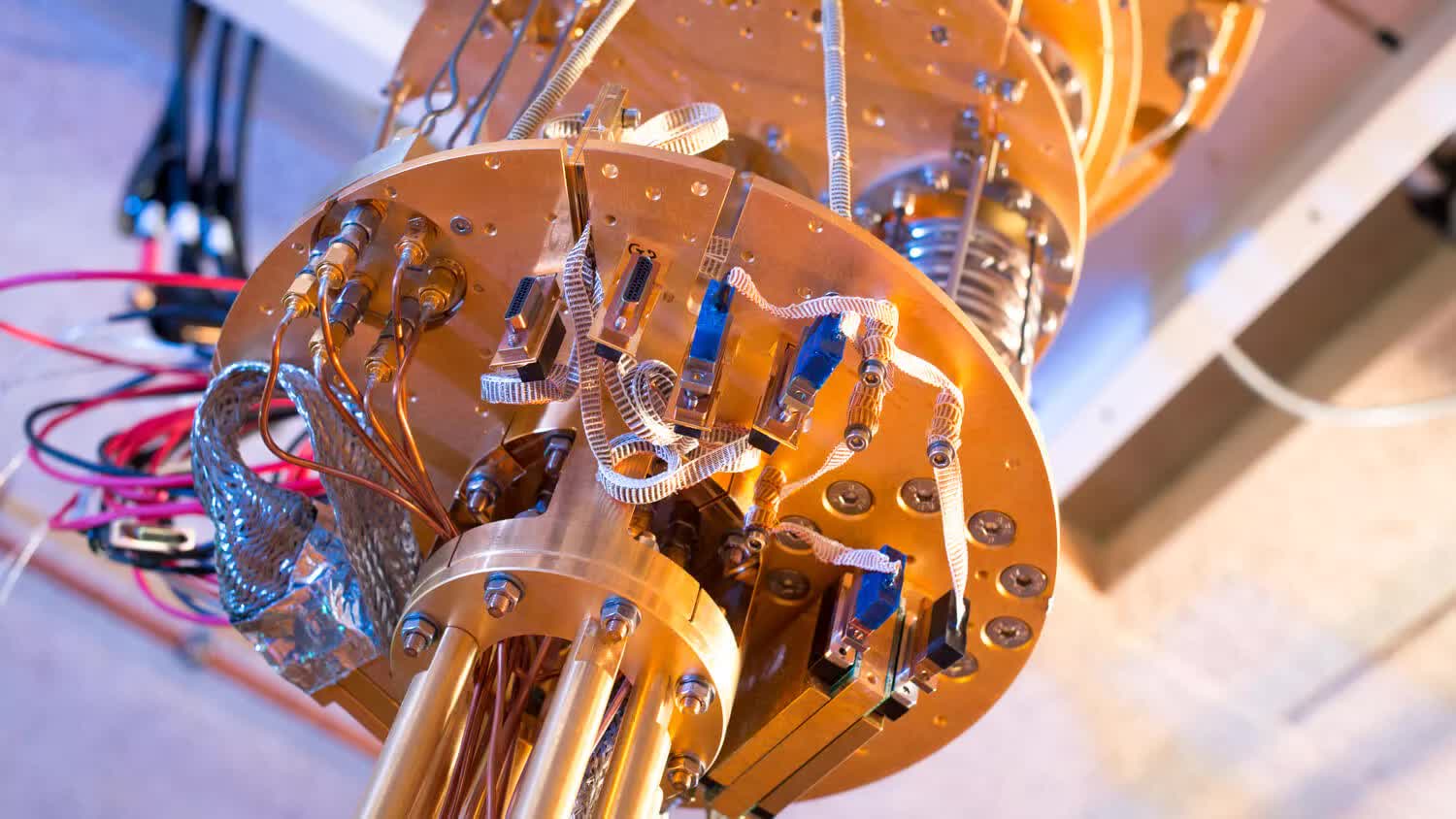In context: Quantum computers are all about qubits, the basic units that operate according to the principles of quantum mechanics instead of the zeros and ones of today's computers. They promise incredible calculation speeds for certain problems, but they're extremely finicky. The slightest bit of heat or electromagnetic disturbance can disrupt their delicate quantum states.

Quantum computers run at temperatures just a hair above absolute zero. And keeping them humming along at these temps requires massive, multi-million dollar cooling systems known as dilution refrigerators.
Researchers at the Institute of Science and Technology Austria (ISTA) have made a breakthrough that could significantly reduce the cost of these computers – by removing one of the main sources of heat.
Electrical signals in these computers travel through wires, which generate heat due to resistance. With millions of signals constantly pinging the qubits, that heat builds up fast, forcing bigger and pricier cooling rigs.

The researchers replaced these electrical connections with fiber optic cables, which can transmit signals using light instead of electricity. Fiber optics are effectively heat-free and have other advantages, such as higher bandwidth and less electromagnetic interference.
However, there's a catch: qubits can't directly process optical signals. So the ISTA team used a clever electro-optical transducer to convert the optical signals into microwaves that the qubits can understand, and vice versa.
Georg Arnold, co-lead author of the study published in Nature Physics, said that the new approach might allow them to increase the number of usable qubits so they become useful for real computation. He also stated that it sets the stage for networking multiple quantum computers over fiber optic links at room temperature. The technology removes a lot of performance-limiting electronics, too.
That said, this new method is still just a prototype with lots of room for improvement. But it represents a critical first step toward quantum systems that don't require super-cooling every component. That could make them vastly more practical and affordable to build and operate at serious scales.
Of course, a truly useful large-scale quantum computer is probably still a few decades away, but breakthroughs like these bring us a little closer.
Masthead credit: ISTA